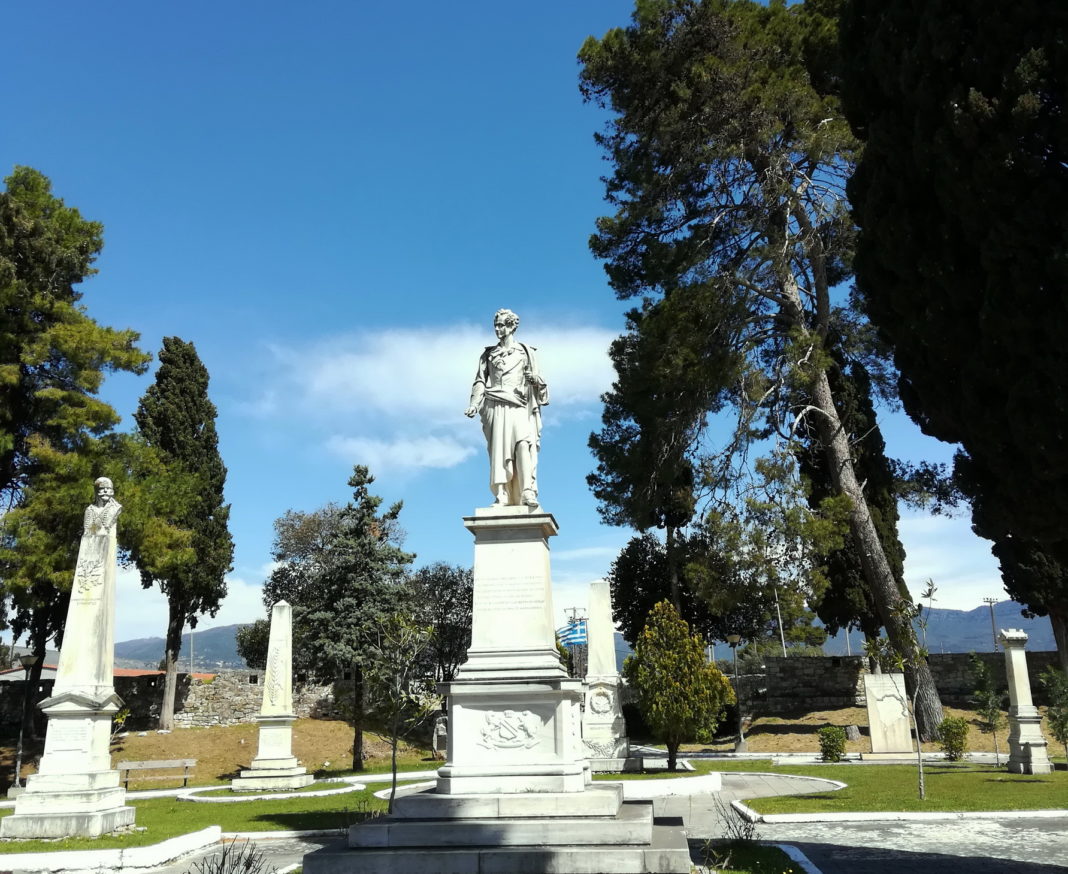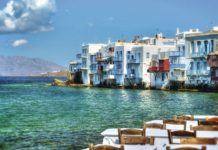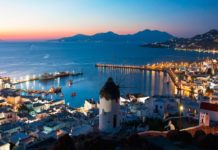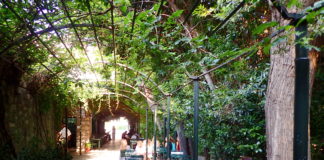All Greeks and anyone interested in the history of Modern Greece will know of Missolonghi. But relatively few have visited. This remote and quiet city in the west of Greece, where the Gulf of Corinth meets the Ionian sea, is the site of one of the most important and tragic episodes in the Greek War of Independence. Near beautiful Nafpaktos, Missolonghi is an essential destination for anyone visiting this beautiful part of Greece.
This is one of the most dramatic and moving places in he history of Modern Greece. It’s a fascinating city to visit, for its history, for the Garden of Heroes, and for its museum. Missolonghi’s lagoon is also reason in itself to come to this beautiful and interesting corner of western Greece.
Table of Contents
Missolonghi and the Greek War of Independence
Missolonghi, strategically located and protected by the islands in its lagoon, was difficult to conquer. There was a siege in 1822, and another in 1823 – both unsuccessful. Finally, the united Ottoman and Egyptian forces resolved to seize it decisively in 1825. Owing to its unique placement in the lagoon, Missolonghi proved difficult to seize. But it proved less difficult to cut off. Ibrahim Pascha’s tactic was to slowly starve the city into submission. Admiral Andreas Miaoulis was successful in breaking though the blockade and supplying the city, until the Ottomans captured the island of Anatolikos. The population weakened, surviving only just barely. In the end, they had only some boiled seaweed.
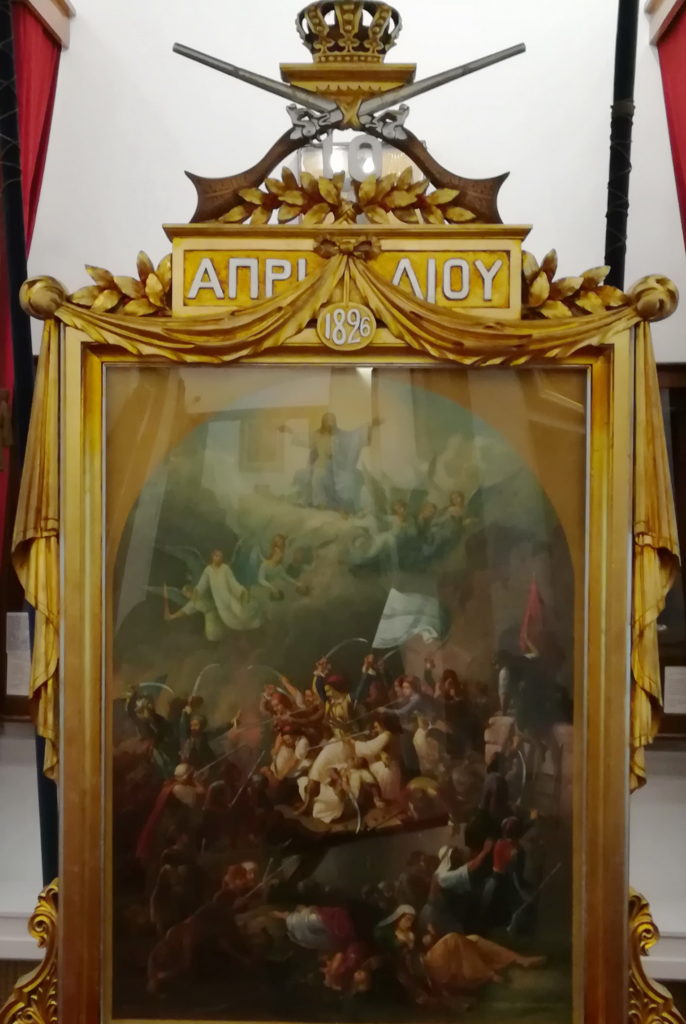
The Exodus – the “Sortie”
After over a year of this bravery and hardship, the only chance of survival remained a great exodus from the city, against severe odds. Of the 9,000 people in Missolonghi, just 7,000 were strong enough to attempt to attempt the exodus. The rest gathered into houses stocked with gunpowder, waiting for the Ottomans. In taking their own lives, they furthered the revolutionary cause.
Of the 7,000 who fled, just 1,000 survived. The city burned; the massacre was of epic proportions. The tragedy of the third siege of Missolonghi captured the attention of Europe, and increased European involvement in the Revolution. Eventually, this led to the decisive victory of the Battle of Navarino.
The Exodus in Art
The exodus of Missolonghi episode inspired some dramatic and moving works of art. Among them is Delacroix’s Greece on the Ruins of Missolonghi.
The Municipal History and Art Museum of Missolonghi
A copy of the Delacroix work is in Missolonghi’s Municipal History and Art Museum, along with copies of two well-known works of Vryzakis, and some original works.
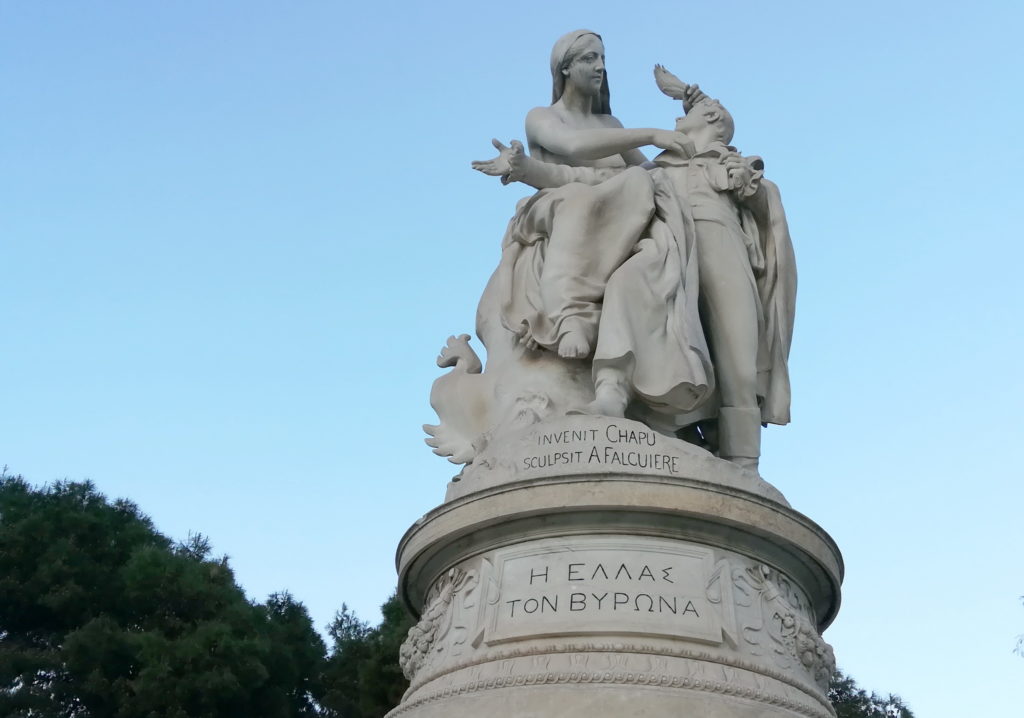
Lord Byron and Missolonghi
Before the third siege of Missolonghi, the city was already known to many Europeans. The Romantic poet Lord Byron was among the early European intellectuals to adopt the cause of Greece’s independence. He gave much of his personal fortune, initially to the repair of ships and to equip his own band of fighters. Also, as a member of the London Philhellenic Committee, he helped arrange revolutionary loan.
But most interestingly, Lord Byron served as a mediator between various revolutionary factions, each making claims to represent the nation. Lord Byron had a purity of vision. He fostered a concept of Greece as a spiritual whole. It was in fulfilling his role as mediator that he succumbed to illness, dying in Missolonghi in April of 1824, two years before the siege of Missolonghi.
The Garden of Heroes
Missolonghi honors its history and its heroes, both famous and anonymous. The first governor of Greece, Ioannis Kapodistrias, thought of creating the Garden of Heroes. King Otto and Queen Amalia had the walls rebuilt, and trees planted. Here in the garden, heroes of the revolution – both Greek and international – are honored side by side. The most touching of all the monuments is the Tomb of the Heroes, where the bones of many unknown fighters are buried.
Lord Byron’s monument is in a central spot. It was his dying wish to be buried here, in Greek soil. But his remains were transported back to England. Some accounts say that he was denied a burial at Westminster on account of his unorthodox morality. More interestingly still, many reports have it that his heart was removed before his body was transported, and that it’s buried here.

